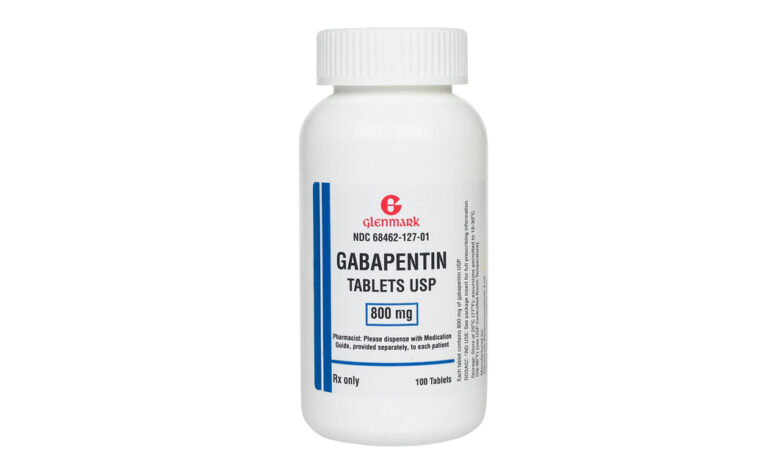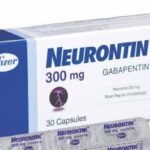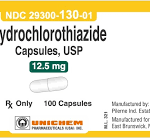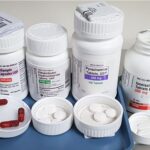What Are The Most Common Side Effects of Gabapentin?

Gabapentin, sold under the brand name Neurontin and Gralise, is a prescription drug most commonly prescribed to relieve nerve pain following shingles in adults, treating the pain of post herpetic neuralgia. Gabapentin belongs to a class of drugs known as anti-seizure drugs.
Gabapentin was first discovered in the 1970s in Japan. Its original use was as a muscle relaxer and anti-spasmodic medication, but later, it was discovered the potential of the medication as anticonvulsive medication and as an adjunct to stronger anticonvulsants. Gabapentin got FDA approval for partial seizure therapy in 1993. Currently, gabapentin has FDA approval for:
- Postherpetic neuralgia
- Adjunctive therapy in the treatment of partial seizures with or without secondary generalization in patients over the age of 12 years old with epilepsy, and in the pediatric population, 3 to 12 year-olds with a partial seizure
- Moderate to severe restless leg syndrome (RLS) moderate to severe
It also has off-label use for neuropathic pain, fibromyalgia, bipolar disorder, postmenopausal hot flashes, essential tremors, anxiety, resistant depressant and mood disorders, irritable bowel syndrome (IBS), alcohol withdrawal, postoperative analgesia, nausea and vomiting, migraine prophylaxis, headache, interstitial cystitis, painful diabetic neuropathy, social phobia, generalized tonic-clonic seizures, pruritus (itching), insomnia, post-traumatic stress disorder (PTSD), and refractory chronic cough.
How Gabapentin works
The precise mechanism through which gabapentin exerts its therapeutic effects is unclear. The primary mode of action appears to be at the auxillary α2δ-1 subunit of voltage-gated calcium channels (though a low affinity for the α2δ-2 subunit has also been reported). The major function of these subunits is to facilitate the movement of pore-forming α1 subunits of calcium channels from the endoplasmic reticulum to the cell membrane of pre-synaptic neurons. There is evidence that chronic pain states can cause an increase in the expression of α2δ subunits and that these changes correlate with hyperalgesia. Gabapentin appears to inhibit the action of α2δ-1 subunits, thus decreasing the density of pre-synaptic voltage-gated calcium channels and subsequent release of excitatory neurotransmitters. It is likely that this inhibition is also responsible for the anti-epileptic action of gabapentin.
How to use gabapentin oral
Read the Medication Guide and if available, the Patient Information Leaflet provided by your pharmacist before you start taking gabapentin and each time you get a refill. If you have any questions, ask your doctor or pharmacist.
Take this medication by mouth with or without food as directed by your doctor. Dosage is based on your medical condition and response to treatment. For children, the dosage is also based on weight.
If you are taking the tablets and your doctor directs you to split the tablet in half, take the other half-tablet at your next scheduled dose. Discard half tablets if not used within several days of splitting them. If you are taking the capsules, swallow them whole with plenty of water.
It is very important to follow your doctor’s dosing instructions exactly. During the first few days of treatment, your doctor may gradually increase your dose so your body can adjust to the medication. To minimize side effects, take the very first dose at bedtime.
What Are The Most Common Side Effects Of Gabapentin?
The most common side effects of gabapentin are:
- drowsiness or tiredness.
- abnormal eye movements that are continuous, uncontrolled, back-and-forth, or rolling.
- clumsiness or unsteadiness.
- constipation.
- diarrhea.
- difficulty speaking.
- dry mouth.
- nausea.
Gabapentin Safety Information
The U.S. Food and Drug Administration (FDA) is warning that serious breathing difficulties may occur in patients using gabapentin (Neurontin, Gralise, Horizant) who have respiratory risk factors. These include the use of opioid pain medicines and other drugs that depress the central nervous system, and conditions such as chronic obstructive pulmonary disease (COPD) that reduce lung function. The elderly are also at higher risk.
Evaluation shows that the use of these medicines, often referred to as gabapentinoids, has been growing for prescribed medical use, as well as misuse and abuse. Gabapentinoids are often being combined with CNS depressants, which increases the risk of respiratory depression. CNS depressants include opioids, anti-anxiety medicines, antidepressants, and antihistamines. There is less evidence supporting the risk of serious breathing difficulties in healthy individuals taking gabapentinoids alone.





